UNB researchers are continuing to tackle the challenges of a changing climate with ground-breaking research.
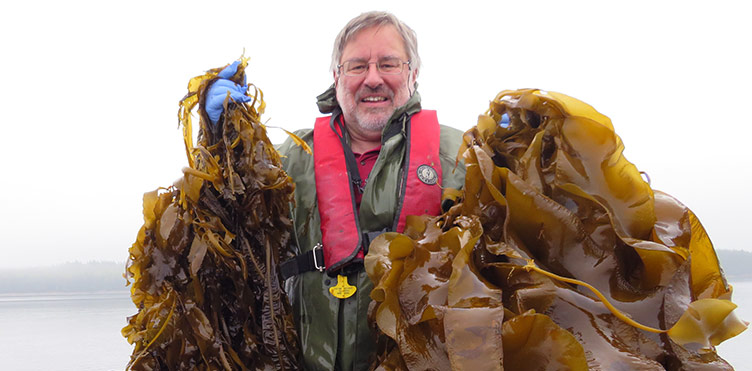
Dr. Thierry Chopin, a professor of marine biology at UNB, was one of 19 international researchers and policy analysts who prepared a cutting-edge report for the United Nations Climate Action Summit, held in New York in September 2019.
The report, “The Ocean as a Solution to Climate Change: Five Opportunities for Action,” was written for the High Level Panel for a Sustainable Ocean Economy (HLPSOE), a unique group of 14 current heads of state and government.
Their work is the first ever comprehensive, quantitative analysis into the role that ocean-based solutions can play in the fight against climate change. The fact that the ocean is threatened by climate change is well documented, however, the researchers flipped the approach to ask if the ocean could, in fact, also provide a climate change solution.
“We identified five opportunities for action that could help turn the tide against climate breakdown,” said Chopin. “We highlight solutions that would help curb climate change and contribute to the development of a sustainable ocean economy, while protecting coastal communities from increasingly severe storms, safeguarding and creating jobs, improving food security, reducing air pollution, restoring habitats for wildlife and helping maintain economic growth, thereby helping to meet the objectives of the Paris Agreement and the Sustainable Development Goals of the United Nations.”
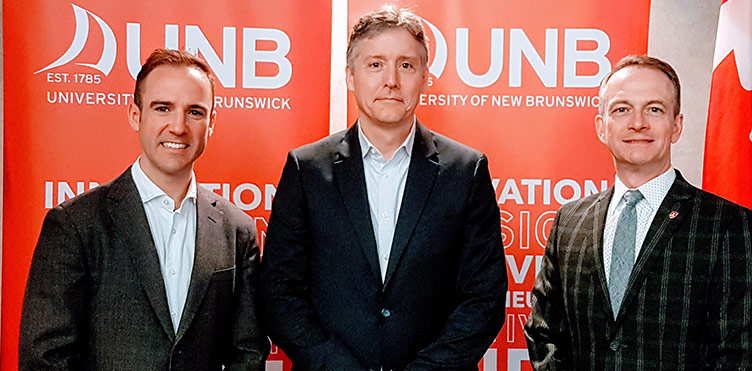
The Government of Canada announced a $300,000 investment in climate adaptation research at UNB to tackle the challenges of a changing climate for current and future generations.
Matt DeCourcey, then-Parliamentary Secretary to the Minister of Immigration, Refugees and Citizenship, on behalf of the Honourable Amarjeet Sohi, Canada’s Minister of Natural Resources at the time, made the announcement in April 2019.
Funded through Natural Resources Canada’s Climate Change Adaptation Program, Dr. Van Lantz, professor and dean of the faculty of forestry and environmental management at UNB Fredericton, will lead a research project focusing on the socio-economic costs and benefits of adapting to climate-induced changes, such as drought and wind, in Atlantic Canada’s forests. Findings from this analysis will help those in the forestry sector and communities, including Indigenous peoples, plan and adapt to the impacts of a changing climate.
“Funding from Natural Resources Canada provides UNB the ability to assemble a team of experts to research the impacts of climate change on forests and explore solutions to adapt that ensures our forests will continue to provide the wide array of ecological goods and services that society depends on,” said Lantz.
 A UNB forestry professor’s research was selected as one of 10 Discoveries of the Year 2018 by Québec Science magazine. Dr. Loïc D’Orangeville and his team studied the effects climate change will have on Eastern Canada’s boreal forest.
A UNB forestry professor’s research was selected as one of 10 Discoveries of the Year 2018 by Québec Science magazine. Dr. Loïc D’Orangeville and his team studied the effects climate change will have on Eastern Canada’s boreal forest.
“You can really track the climate with the growth of a tree,” said D’Orangeville. “By measuring the rings, we were able to determine how much the tree grew any given year and relate that growth to climate conditions for that year.”
In recent decades, field technicians from the Québec government have compiled an impressive tree ring collection by sampling tree species across 400,000 plots of provincial woodland.
Tree growth depends on a number of factors like temperature, precipitation, soil type, age, size of the tree and crowding – the number of trees surrounding a tree. Using this information, the team was able to measure how each species reacted to a wide climate gradient.
D’Orangeville found each species’ response varied greatly depending on region. In the warmer part of the boreal forest there was a decline in growth for most species, as they are already at the southern range of their limit. But response in the northern range had massive increases in growth, because those trees are typically constrained by low temperatures.
Climate change is a reality that D’Orangeville believes many people, including in the forestry sector, do not pay enough attention to. “It takes a tree 50 to 60 years to grow. In that time, our climate is going to be completely different from what it is today.
“The people I work with feel an urgency to gain an understanding of what is going to happen, and how we can prepare for those changes now. We now have access to some of the best types of data to prepare, and these results give a first glimpse of what happens under a business-as-usual scenario. It’s going to help a lot of people decide what type of species to favor – the potential ‘winners’ – as some may not do well in the future.”
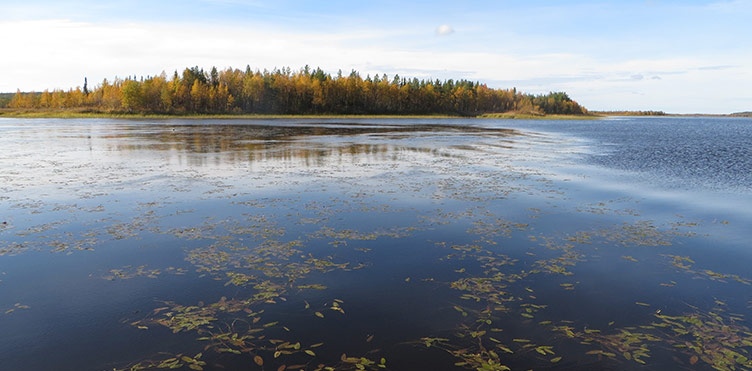
Recent research published in the journal Ecology Letters has shed new light on the way climate change and human activities are reshaping subarctic lakes.
“Climate change is already a reality in the northernmost regions of the earth,” said Dr. Brian Hayden, a fellow of the Canadian Rivers Institute in the biology department at UNB and lead author of the study. “New conditions are allowing traditional livelihoods to be replaced by intensive forestry, mining and agriculture. However, we know relatively little about how these changes are affecting local wildlife and the human populations which depend on it. This study is one of the first to quantify how the lakes in the subarctic will respond to this new environment.”
The team of researchers studied 30 lakes, all situated above the Arctic Circle in Europe, where climate change is already evident in shorter winters and longer, warmer summers. The team examined the diet of fish and invertebrates with chemical tracers called stable isotopes, which reveal the food that fuels these animals. Their study region mimicked the type of changes predicted for this region in the next 100 years.
“We were amazed by the complete change we saw in the food webs. These lakes situated north of the Arctic circle are functioning as though they are in Central Europe,” said Hayden.
The study builds on previous work by the team, which showed that warmer lakes contain up to 100 times as many fish as cold lakes. As these lakes change, the species currently found in them will lose out to species better adapted to the new conditions.
This work is part of a long-term collaboration between researchers in Norway, Finland, Canada and Chile to understand how high latitude ecosystems are responding to climate change.
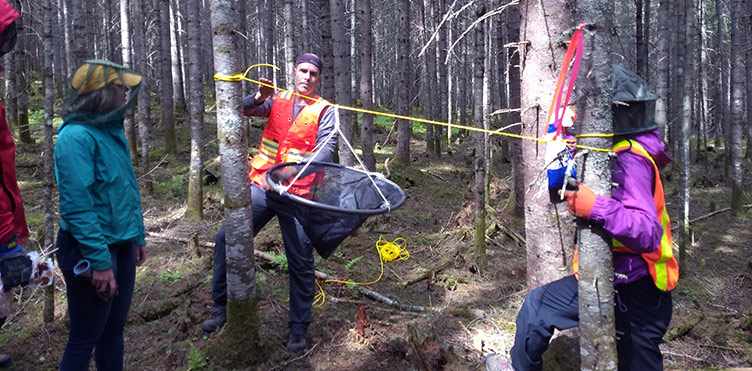
A research lab at UNB has received federal funding for a study into the impact of spruce budworm outbreaks on the environment and climate change.
Dr. Stephen Heard, a professor of biology at UNB Fredericton, and his research lab have received more than $400,000 in funding from the Natural Sciences and Engineering Research Council of Canada’s (NSERC) Advancing Climate Change Science in Canada initiative. The funding was announced in July 2019 as one of nine climate change research projects receiving a total of $4.7 million.
The research project will examine how the spruce budworm – a major forest pest that defoliates and kills conifer trees – affects the crucial role forests play in Earth’s carbon cycle. Trees remove carbon dioxide from the atmosphere and store it in soil. Defoliated forests are less able to remove carbon dioxide from the atmosphere and the thinner tree canopy means warmer soils, which may release stored carbon from the soil.
“We’re pleased to receive funding and recognition from NSERC to help us carry out vital research, revealing the many ways spruce budworm outbreaks change forest ecosystems and affect our climate,” said Heard.
The research is a collaboration between UNB, the Canadian Forest Service in Fredericton and Quebec City, and Agriculture and Agri-Foods Canada in Fredericton and includes federal research scientists Dr. Michael Stastny, Dr. Deepa Pureswaran, Dr. Cameron Wagg, and Dr. Louis-Pierre Comeau.
This study is linked to an even larger project which details how the spruce budworm is affecting many other aspects of forest ecosystems.
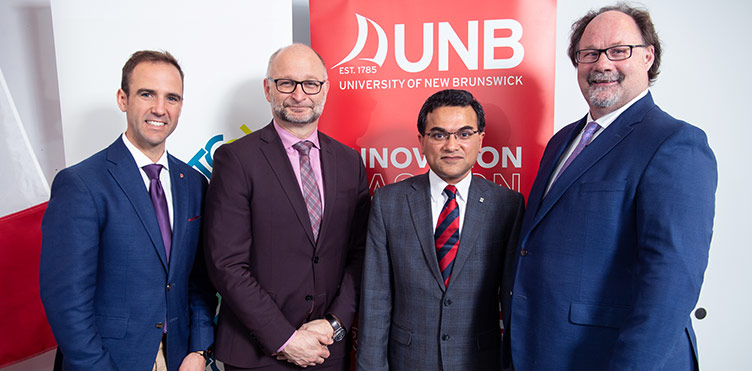
The Nanocomposites and Mechanics Lab at UNB has received federal funding up to $87,380 for their research under Transport Canada’s Clean Transportation System Research and Development Program.
The funding was announced in May 2019 at UNB by Minister of Justice and Attorney General the Honorable David Lametti, on behalf of the Honorable Marc Garneau, Minister of Transport.
The Nanocomposites and Mechanics Lab, led by Dr. Gobinda Saha, directly responds to industry needs. With this project, it’s researching the impact of a high-pressure spray to coat carbon fibre-reinforced polymer composites and aluminum parts, and observe if reducing the weight of targeted components used on boats and trains would increase fuel efficiency and reduce greenhouse gases emissions.
The performance assessment of the technologies developed by the lab will be achieved through a partnership with Imperial Oil. The project will be completed by March 2021, with results published in a peer-reviewed journal.